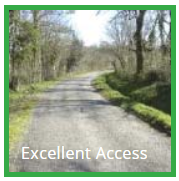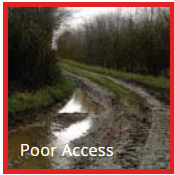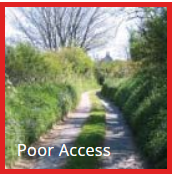Prepare yourself in the event of an emergency.
Note: Prank 911 calls are a criminal offence and will hinder real emergency calls.
For emergency assistance, dial 9-1-1 on your telephone and remain calm. An operator will answer your call and request which service is required. You will then be connected to either the police, fire or ambulance service in your area. Please stay on the line until told to hang up. Let the operator control the conversation and answer all questions as best you can. In emergency situations, help is on the way as you are giving the information.
If you accidentally dial 9-1-1, please remain on the line and explain to the call taker that no emergency exists. If you don't, call takers and emergency personnel are forced to waste valuable time and resources tracking you down to confirm that no emergency exists.
To make the service work best for you:
Home
At Home dial 9-1-1. Do not pre-program 9-1-1 into your telephone, this can cause dialing problems if the battery is low on cordless phones or the button is hit accidentally.
Work
At a Business or other locations you may need to dial an outside line before dialing 9-1-1.
Public
At a Pay Phone dial 9-1-1, a coin is not necessary.
Mobile
When using a Cellular phone you must specify that you are using such. Emergency services may not be able to locate through embedded GPS technology. Make sure you know and be prepared to give your location, including the city or town, roadway, closest civic address or intersections.
Internet Phone Service
Contact your Voice over Internet Protocol (VoIP) provider to ensure you have access to 911 emergency services. Make sure to know your location and be able to describe closest civic addresses and intersections.
Known as a 9-1-1 address, a street address, or a civic address, this designation is made up of individual parts that combine to uniquely describe a specific location.
Civic addressing is primarily in place to help emergency services locate properties. Addresses are subsequently referenced for mail, phone services, etc.
Civic Address Application
A 911 Civic Address Application must be completed and submitted to the Township Office if:
- Your property required a civic address as part of a building permit
- Your property was never addressed previously, and you wish to have it addressed
- Your property signage was damaged and you are replacing it
For more information view the Civic Addressing Policy and Fees and Charges By-law.
Entrance Permits
If your driveway enters from a Township Road than an Entrance Permit must be completed with applicable fee and approved by the Public Works Department prior to applying for a civic address.
All other driveways that enter from a laneway, or private lane, should be made sufficiently accessible for emergency vehicles.
For more information view the Construction of Driveways Policy and Fees and Charges By-law.
Farm 911- The Emily Project
The Township of Wainfleet is pleased to offer Civic Address signs as part of the Farm 911 – The Emily Project. https://www.farm911.ca/
A Farm Parcel Municipal Address Application must be completed and submitted to the Township Office if:
- Your property was never addressed previously, and you wish to have it addressed
- Your property signage was damaged and you are replacing it
For more information go to the Municipal Addressing page, or complete the Application Form.
Facts in Wainfleet
911 signs on properties with buildings are blue with white numbers
911 signs on vacant farm parcels are yellow with black numbering
All Wainfleet signs have 5 digits.
The first digit indicates the Concession, the second and third digit indicates side-road, and the fourth and fifth digit is a percentage between the side-roads.
Example: 31904 Highway 3 (Township Office)
3 (on or south of concession 3) 19 (on or west of side-road 19) 04 (South to North and East to West percentage of road)
Property Owners Responsibilities
- The property owner is responsible for notifying all other authorities including Bell Canada, and other service providers such as insurance companies, Canada Post, etc.
- The maintenance of the driveway and the integrity of the civic address signage is the responsibility of the property owner. Poor vehicle access or signage visibility can negatively affect the emergency response to your location and insurance companies may consider this. Make sure your signage and property access is clear for emergency services.
Townships Responsibilities
- Once the Application and payment has been received by the Township, the Township will visit the location and measure/calculate the address number and install the proper signage.
- Arrangements and instructions will be given to Water Access Only properties to post their own signage after a number is calculated in the office.
- The Township will update internal records and mapping platforms.
"The Township is not responsible for inspecting or identifying private lanes/rights-of-way or driveways that do not meet the Township's minimum standard. It is the sole responsibility of the land owner to ensure that their lane/right-of-way/driveway is accessible for emergency vehicles and maintained in a safe condition."
See below and review the images depicting good and poor access.
Good Access




Poor Access



Niagara 9-1-1 and the Emergency Services of Niagara are pleased to announce the delivery of Text with 9-1-1 (T9-1-1) service in the Niagara Region. T9-1-1 technology enables Communications operator to communicate with members of the DHHSI (Deaf, hard of hearing or speech impaired) community by text messaging. T9-1-1 can be used whenever a Police, Fire Department, Niagara EMS or Niagara Parks Police response is required.
To be eligible to use this service the cell phone must be;
- Registered for T9-1-1 with the DHHSI subscriber's cell phone company in advance
- Capable of sending and receiving text (SMS) messages and activated with a service package that includes text messaging
- Connected to a cellular network.
In order to use the T9-1-1 service, registered users must place a conventional voice call to 9-1-1. The call from a registered cell phone is flagged to the emergency operator, prompting them to initiate a text chat with the registered device. Note that NO cell phone can initiate a text messaging session with a 9-1-1 centre. Unsolicited text messages sent to the number 9-1-1 are not delivered. The open call alongside a T9-1-1 messaging session enables the emergency operator to hear background sounds, and to immediately transition to a voice conversation with any person if the opportunity arises.
T9-1-1 registered callers are asked to be prepared to identify their ability to speak or hear as it is possible to expedite by conducting one side of the communication verbally while messaging the remainder of the communication.
T9-1-1 messaging, unlike conventional 9-1-1 calls, is reliant upon commercial public networks and the technological constraints thereof; Niagara 9-1-1 has no control over the delivery success/timelines of text messaging content.
As with voice calls to 9-1-1, the T9-1-1 service must only be used in the case of emergencies. Additional detail and instructional videos are available at www.textwith911.ca.
